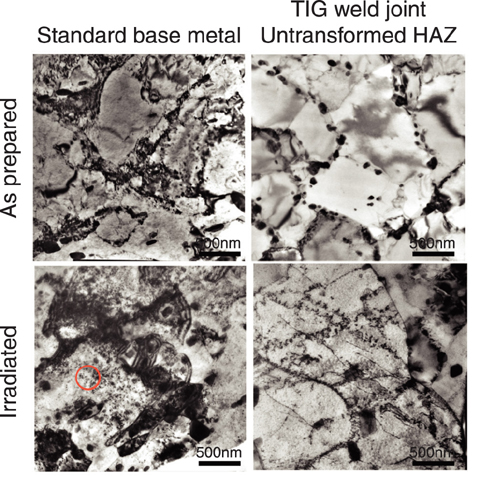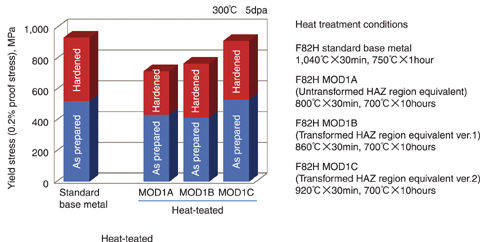
Fig.3-15

Fig.3-16 TEM microstructure of base metal and untransformed TIG-HAZ region before and after irradiation.

Fig.3-17 Yield stress of standard and heat-treated F82H, simulating the thermal history of TIG-HAZ region
Reduced activation ferritc/martensitic steels (RAFMs) are the leading candidates for the fusion blanket structural material. F82H (Fe-8Cr-2W- V,Ta) is the one of the RAFMs which has been developed by JAEA. The key issue now is how to suppress the irradiation hardening and embrittlement induced by neutron irradiation at temperature below 350°C.
In the course of research into irradiation hardening, it was found that the irradiation hardening at the heat affected zone (HAZ) of a TIG weld joint is much smaller than that of the standard base metal and the TIG weld metal (Fig.3-15). TEM observation of these regions revealed that dislocation loops, which are recognized as the key feature causing irradiation hardening, are not observed in the untransformed HAZ region (Fig.3-16). Based on these results, F82H was heat treated in a manner simulating the thermal history of HAZ region, and then neutron irradiated. A tensile test revealed that the heat treating which simulates the thermal history of untransformed HAZ region yielded the smallest hardening (Fig.3-17).
This research was conducted as the part of the collaborative program for testing structural materials in mixed-spectrum reactors of JAEA and US Department of Energy.